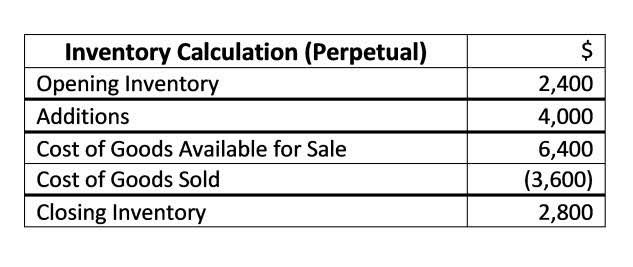
‘Recycling’ is the process whereby items previously recognised in other comprehensive income are subsequently reclassified to profit or loss.as an accounting adjustment but referred to in IAS 1 as reclassification adjustments.. In other words gains or losses are first recognised in the OCI and then in a later accounting period also recognised in the SOPL. In this way the gain or loss is reported in the total comprehensive income of two accounting periods and in colloquial terms is said to be ‘recycled’ as it is recognised twice.
What Should Be Included in a Statement of Comprehensive Income?
This is key for understanding how companies are really doing, particularly the big ones. While net income includes only made trial balance revenue and costs, OCI considers the part that’s unrealized. The purpose of the statement of profit or loss and other comprehensive income (PLOCI) is to show an entity’s financial performance in a way that is useful to a wide range of users. The statement should be classified and aggregated in a manner that makes it understandable and comparable. An entity may refer to the combined statement as the Statement of comprehensive income.

Example of foreign currency translation adjustment
- For example, an analyst can obtain insight regarding the management of the company’s investments.
- MetLife and Goodyear have shown big differences between their standard profits and the bigger financial picture.
- When a business has operations in countries with different functional currencies, it must translate foreign financial statements into its reporting currency to consolidate its financials.
- Taking a glance at Other comprehensive income (OCI) and its relation to Net Income is worth the effort.
- OCI items occur more frequently in larger corporations that encounter such financial events.
- Revenues, expenses, gains, and losses that are reported as other comprehensive income are amounts that have not been realized yet.
Once a company Accounting Security has completed the transaction, it will move the gain or loss out of other comprehensive income and will report it in the income statement. For smaller businesses, these special income items might not come up as often. But for large companies with many investments, global branches, or lots of pension commitments, it’s vital. The Financial Accounting Standards Board (FASB) requires companies to report OCI.
- It’s important to note that if your business doesn’t have items that fit under OCI, the statement of comprehensive income may not be necessary.
- For example, suppose there are large fluctuations in OCI from one year to the next.
- OCI, sometimes referred to as comprehensive earnings, represents specific types of unrealized gains and losses that are not included in a company’s net income.
- Understanding the statement of comprehensive income is particularly important because it enables small businesses to reflect true income over a particular period.
- It provides a snapshot of the profitability of a company’s core business activities.
- The opposite of comprehensive income is narrowed-down income or income from its main operation.
IFRS Accounting
Imagine opening a company’s financial statement and discovering a hidden layer of income that isn’t reflected in the net earnings. It represents gains and losses that aren’t included in your typical profit and loss statements, providing a fuller picture of a company’s financial health. An analyst can understand the unrealized gains and losses on bonds and shares while going through the components of the other comprehensive income. For example, if a share has been purchased at $50 and the fair market value is $70, the unrealized gain is $20. An analyst can understand the fair value of a company’s investments by reading about the other comprehensive income components.
- Comprehensive income is the change in the value of equity that stems from non-owner and traditional income sources.
- Because of these changes, in October 2010 the Board restructured IFRS 9 and its Basis for Conclusions.
- When assets are revalued and their carrying amount is increased, the excess over the original cost or previous revalued amount is credited to equity under a heading of revaluation surplus within other comprehensive income.
- Pension plan adjustments account for changes in pension obligations or asset values over time.
- Below is a break down of subject weightings in the FMVA® financial analyst program.
AccountingTools
- By showing these on a different part of the balance sheet, companies give a clearer view of their financial state.
- For example, OCI can provide insights into the effects of foreign exchange rate changes on a company’s foreign operations or the impact of market fluctuations on its investment portfolio.
- The items recorded in Other Comprehensive Income (OCI) are generally not considered for tax purposes until they are realized.
- Just because its market value is fluctuating doesn’t mean the company will necessarily have less retained earnings down the road.
Few small businesses deal with OCI often, but big companies find it very important. Multinationals must meet OCI reporting standards by groups like the Financial Accounting Standards Board (FASB), International Accounting Standards Board (IASB), and others. It highlights potential risks and rewards that aren’t apparent through net income alone. By examining OCI, you can gauge how external factors may impact investment returns.
It is presented in a statement of comprehensive income, which can be a standalone report or combined with the income statement. The statement of comprehensive income starts with net income, then lists the items of OCI, and concludes with total comprehensive income, which is the sum of net income and OCI. Instead, they are recorded in other comprehensive income (OCI) to prevent these fluctuations from distorting the operational performance of the company. Currency exchange rates can significantly impact the financial statements of companies that operate internationally. When a business has operations in countries with different functional currencies, it must translate foreign financial statements into its reporting currency to consolidate its financials.

What Is a Statement of Comprehensive Income?

Other Comprehensive Income (OCI) is an essential component of financial reporting statement of comprehensive income that captures unrealized gains and losses, reflecting the company’s financial performance beyond net income. OCI includes items such as foreign currency translation adjustments, unrealized gains and losses on available-for-sale securities, hedging activities, and, under IFRS, revaluation surpluses. These elements provide a more comprehensive view of a company’s financial health by showcasing the effects of market and economic changes on its assets and equity. Net income is the core component of comprehensive income, derived from a company’s usual business operations like sales, services, and expenses. It provides a snapshot of the profitability of a company’s core business activities.